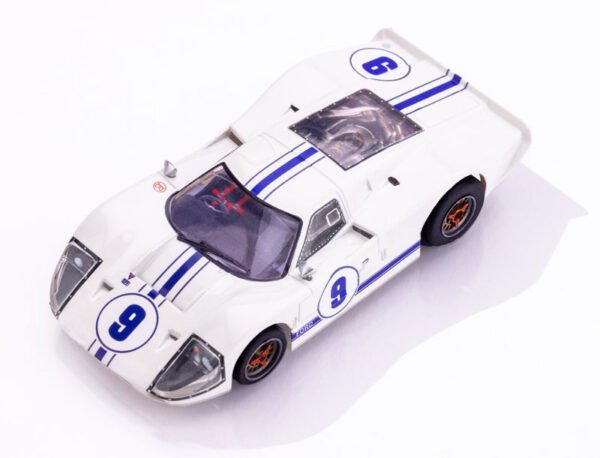
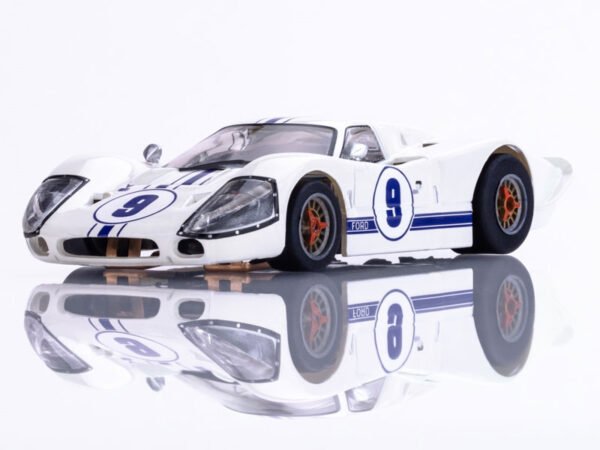
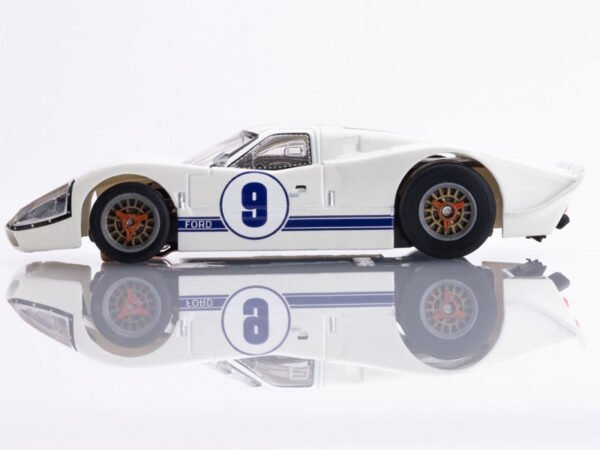
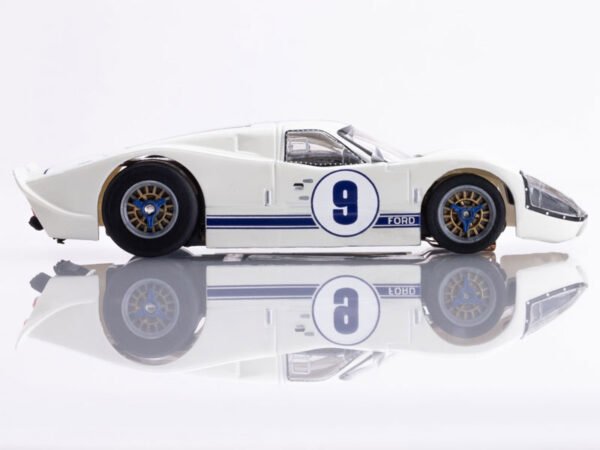
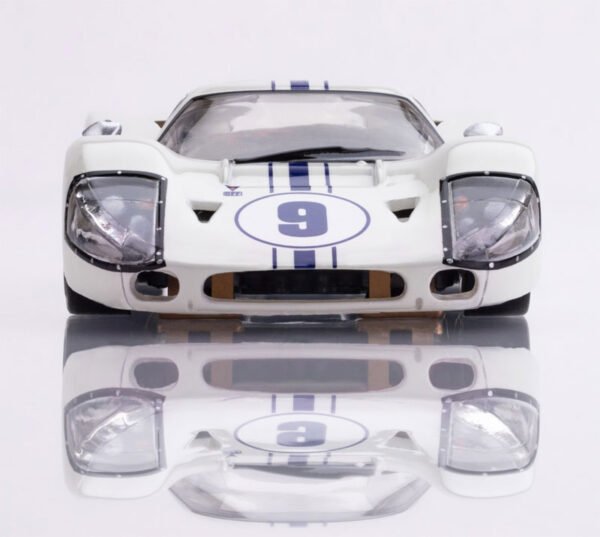
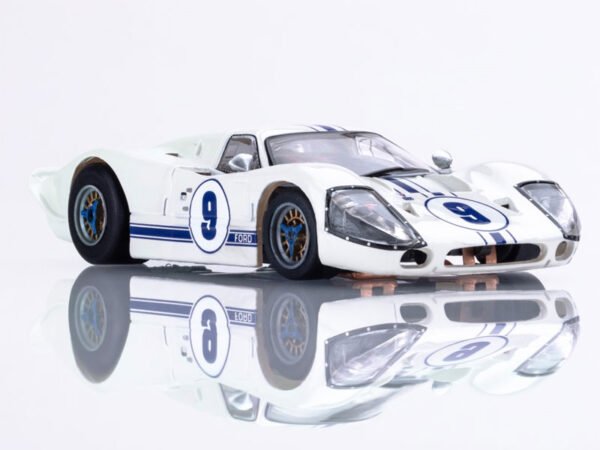
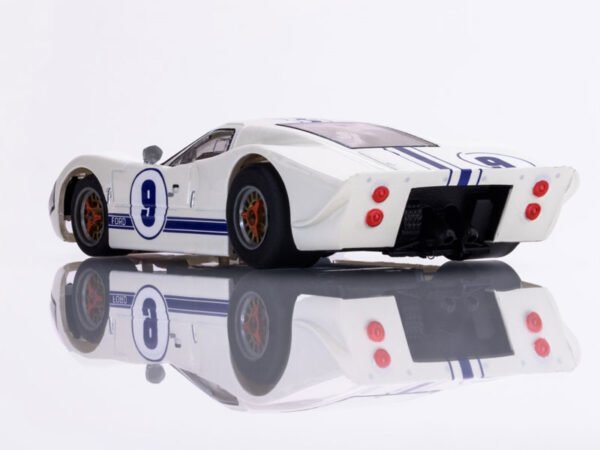
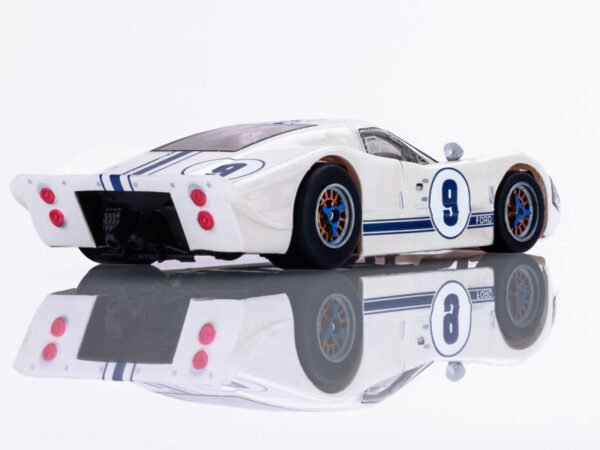
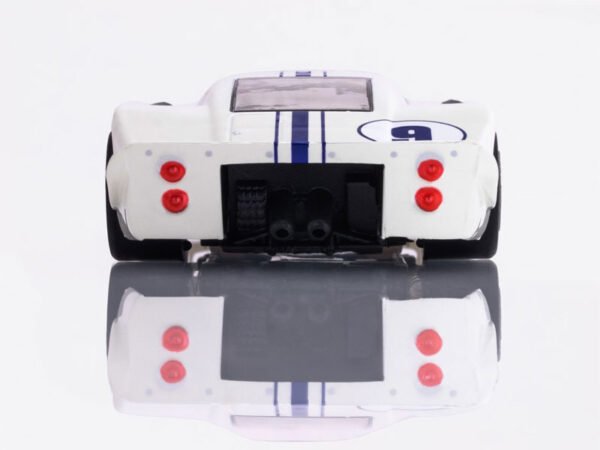


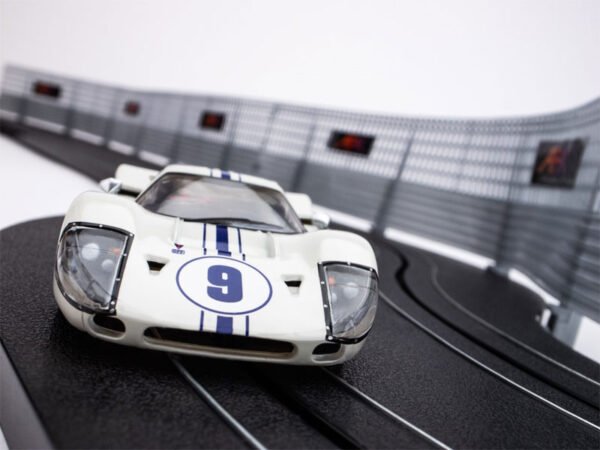
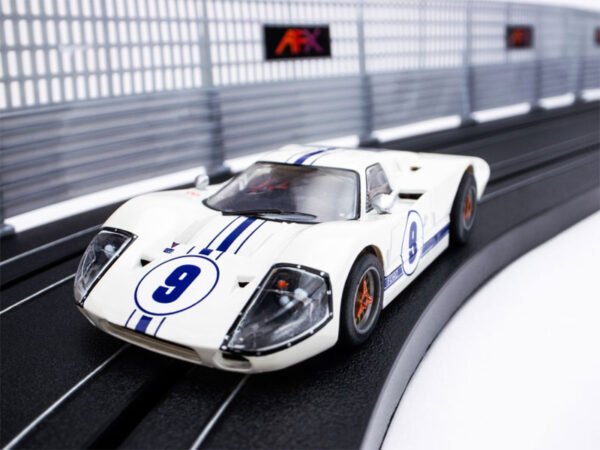
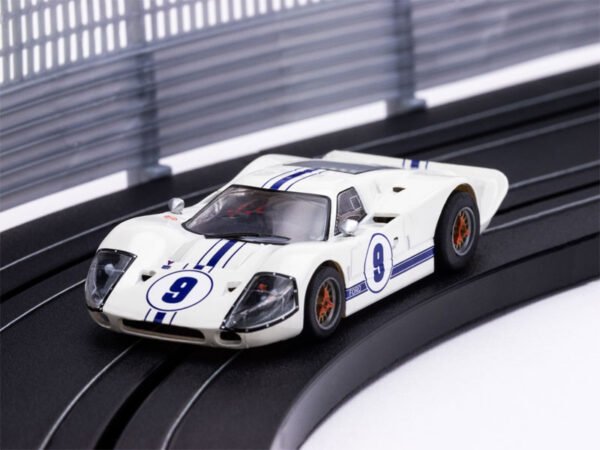
AFX Ford GT40 Mark IV #9 White Mega G+ HO Slot Car
Description
This is the AFX Ford GT40 Mark IV #9 White Mega G+ HO Slot Car
AFX Collector Series – Ford GT40 Mk IV J-9
The origins of the Ford GT40 MKIV is marred by tragedy. It began in 1966 with the J-Car just
after LeMans. Ken Miles was test driving the car when it crashed on an embankment, bursting
into flames. The rest is heavy-hearted history. There were only 10 made, only half of which ever
actually raced. However, the MKIV is known for breaking records both at home and abroad. It
only ran in two races: the Sebring 12 Hours and the 24 Hours of Le Mans – the most
prestigious race events in all of motorsport. It won both.
These victories were no accident. Ford made sure of that. The car was specifically,
painstakingly designed for endurance, designed for speed…designed to win. Each element of
the MKIV was totally different from other GT40s, starting with where it was made. Unlike its predecessors the MKI and ll cars which were built entirely or partly in Europe, the MKIV
was built from scratch in the United States. A little “skunk works” company called Kar Kraft built the all-new J series chassis and newly designed long, streamlined bodywork for Ford’s Special
Vehicles Activity. The MKIV was easily the most radical variant of all the GT40s.
Other modifications were made as well. A NASCAR-style, steel-tube roll cage was added as a
direct result of beloved racer Ken Miles’ tragic death while testing the first J Car. Though it was
significantly safer, the roll cage was incredibly heavy which hurt the car’s performance.
The 1967 Ford GT40 Mk IV #9 was on the J-9 chassis which was specifically crafted as a Group 7 Can-Am racer. It featured a powerful 3-valve, all-alloy 427 Ford V8 engine—an engineering marvel designed for blistering performance. Built to dominate, its brutal, raw power is palpable. In fact, after testing the car, legendary driver Mario Andretti said the J-9 one of the “scariest cars” he had ever driven.
Specifications
Chassis: Mega G+ SHORT Wheelbase Chassis (1.5″)
Mega G+ Chassis
This chassis doesn’t just go faster or handle better than the competition. It wasn’t just built with the ultra-low, narrow dimensions of the original Mega G to continue the reign of the most realistic HO cars on earth. The Mega G+ Chassis is smoother, more consistent, and more intuitive than any car we’ve ever built.
Includes
AFX Ford GT40 Mark IV #9 White Mega G+ HO Slot Car
Quick Comparison
| AFX Ford GT40 Mark IV #9 White Mega G+ HO Slot Car remove | AFX 1965 Shelby Mustang GT350R Mark Donohue Blue/White Mega G+ HO Slot Car remove | AFX 2021 Ford Mustang Shelby GT500 Red Mega G+ HO Slot Car remove | AFX Ford GT40 MKII 1966 Daytona #97 White/Black/Blue Mega G+ HO Slot Car remove | AFX 1969 AstroVette LMP12 Gold/Black LTD Mega G+ HO Slot Car remove | AFX Ford GT40 MKIV #4 LeMans Mega G+ HO Slot Car remove | |
|---|---|---|---|---|---|---|
| Name | AFX Ford GT40 Mark IV #9 White Mega G+ HO Slot Car remove | AFX 1965 Shelby Mustang GT350R Mark Donohue Blue/White Mega G+ HO Slot Car remove | AFX 2021 Ford Mustang Shelby GT500 Red Mega G+ HO Slot Car remove | AFX Ford GT40 MKII 1966 Daytona #97 White/Black/Blue Mega G+ HO Slot Car remove | AFX 1969 AstroVette LMP12 Gold/Black LTD Mega G+ HO Slot Car remove | AFX Ford GT40 MKIV #4 LeMans Mega G+ HO Slot Car remove |
| Image |  |  |  |  | 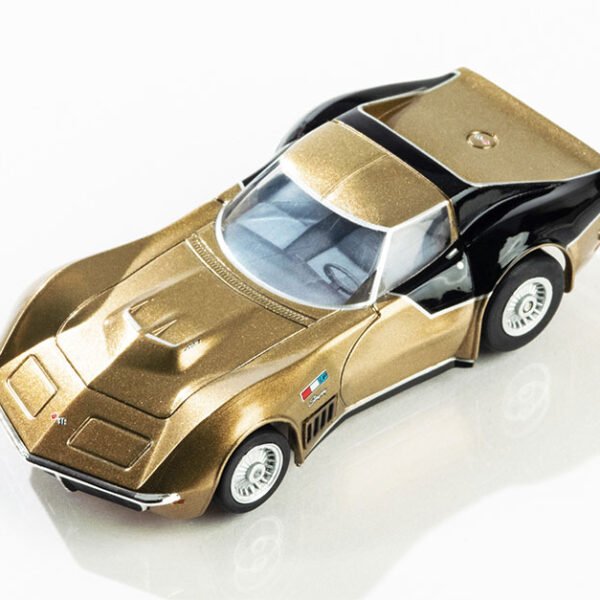 |  |
| SKU | ||||||
| Rating | ||||||
| Price | Original price was: £35.90.£4.90Current price is: £4.90. Save 86% | Original price was: £35.90.£4.90Current price is: £4.90. Save 86% | Original price was: £34.90.£4.90Current price is: £4.90. Save 86% | Original price was: £35.90.£4.90Current price is: £4.90. Save 86% | Original price was: £35.90.£4.90Current price is: £4.90. Save 86% | Original price was: £34.90.£4.90Current price is: £4.90. Save 86% |
| Stock | ||||||
| Availability | ||||||
| Add to cart | ||||||
| Description | ||||||
| Content | This is the AFX Ford GT40 Mark IV #9 White Mega G+ HO Slot Car AFX Collector Series - Ford GT40 Mk IV J-9 The origins of the Ford GT40 MKIV is marred by tragedy. It began in 1966 with the J-Car just after LeMans. Ken Miles was test driving the car when it crashed on an embankment, bursting into flames. The rest is heavy-hearted history. There were only 10 made, only half of which ever actually raced. However, the MKIV is known for breaking records both at home and abroad. It only ran in two races: the Sebring 12 Hours and the 24 Hours of Le Mans – the most prestigious race events in all of motorsport. It won both. These victories were no accident. Ford made sure of that. The car was specifically, painstakingly designed for endurance, designed for speed…designed to win. Each element of the MKIV was totally different from other GT40s, starting with where it was made. Unlike its predecessors the MKI and ll cars which were built entirely or partly in Europe, the MKIV was built from scratch in the United States. A little “skunk works” company called Kar Kraft built the all-new J series chassis and newly designed long, streamlined bodywork for Ford’s Special Vehicles Activity. The MKIV was easily the most radical variant of all the GT40s. Other modifications were made as well. A NASCAR-style, steel-tube roll cage was added as a direct result of beloved racer Ken Miles’ tragic death while testing the first J Car. Though it was significantly safer, the roll cage was incredibly heavy which hurt the car’s performance. The 1967 Ford GT40 Mk IV #9 was on the J-9 chassis which was specifically crafted as a Group 7 Can-Am racer. It featured a powerful 3-valve, all-alloy 427 Ford V8 engine—an engineering marvel designed for blistering performance. Built to dominate, its brutal, raw power is palpable. In fact, after testing the car, legendary driver Mario Andretti said the J-9 one of the “scariest cars” he had ever driven. Specifications Chassis: Mega G+ SHORT Wheelbase Chassis (1.5") Mega G+ Chassis This chassis doesn’t just go faster or handle better than the competition. It wasn’t just built with the ultra-low, narrow dimensions of the original Mega G to continue the reign of the most realistic HO cars on earth. The Mega G+ Chassis is smoother, more consistent, and more intuitive than any car we’ve ever built. Includes AFX Ford GT40 Mark IV #9 White Mega G+ HO Slot Car | This is the AFX Mark Donohue 1965 Shelby Mustang GT350R Blue/White Mega G+ HO Slot Car Mark Donohue - AFX Collector Series Mark Donohue, a multi-talented racer and degreed engineer, amassed a remarkable record of championships, victories, and innovative cars developed across 8 different racing classes. But it was his 1965 race wins and SCCA Divisional Championship in a Shelby GT350R that helped bring him to the attention of a certain Roger Penske. This began a racing partnership that would yield legendary race wins and success for many years. The GT350 “R” model was rare indeed with only 37 ever made specifically for competitive use under SCCA rules. The car made an excellent impression on racing circuits, becoming the B-Production divisional champion 3 years in a row. In typical AFX fashion, the HO Scale version of this car comes fully decked out with even the smallest details like the racing oil cooler under the front grill and the tapered white stripes over the beautiful Guardsman blue body. Even the 5 spoke wheels are the style used when the car was raced. Mark Donohue’s Victories and/or Championships · SCCA E Production (1961) · SCCA B Production (1965) · SCCA Formula C (1965) · USRRC (1967) · USRRC (1968) · 24 Hours Daytona (1969) · USAC Pocono (1971) · USAC Michigan (1971) · Indianapolis 500 (1972) · NASCAR Winston Cup Riverside (1973) · CAN-AM (1973) · IROC (1973-74) In addition, Mark raced with considerable success in Formula 1 and at the Le Mans 24 Hour race. Specifications Chassis: Mega G+ LONG Wheelbase Chassis (1.7″) Mega G+ Chassis This chassis doesn’t just go faster or handle better than the competition. It wasn’t just built with the ultra-low, narrow dimensions of the original Mega G to continue the reign of the most realistic HO cars on earth. The Mega G+ Chassis is smoother, more consistent, and more intuitive than any car we’ve ever built. Includes One AFX 1965 Shelby Mustang GT350R Mark Donohue Blue/White Mega G+ HO Slot Car | This is the AFX 2021 Ford Mustang Shelby GT500 Red HO Slot Car. The Mustang of the century, Ford’s 2021 Shelby GT500 is the fastest, most powerful street-legal car Ford has ever produced. The Mustang is Ford’s original “Pony car” and hasn’t deviated from its core composition in more than 55 years. It’s certainly been worth the wait for its 760 horsepower and 625 pound-feet of torque. And don’t let its smaller, lighter, athletic look fool you, with the Predator – the supercharged 5.2 liter V-8 engine, the GT500 roars from 0 to 100 to 0 in under 10.6 seconds and tops out at 180mph. Stomping through the streets with a kind of grace, it’s no wonder this GT500 is the only Mustang to bear the Cobra Snake Badge. AFX displays the Mustang’s unique, new design with a high-flying rear wing, intricate grill and muscular but sleek, sloping body. With black accents atop a stunning red, this car will turn anyone’s head. Specifications Chassis: Mega G+ LONG Wheelbase Chassis (1.7″) Mega G+ Chassis This chassis doesn’t just go faster or handle better than the competition. It wasn’t just built with the ultra-low, narrow dimensions of the original Mega G to continue the reign of the most realistic HO cars on earth. The Mega G+ Chassis is smoother, more consistent, and more intuitive than any car we’ve ever built. Includes One AFX 2021 Ford Mustang Shelby GT500 Red HO Slot Car | This is the AFX Ford GT40 MKII 1966 Daytona #97 White/Black/Blue Mega G+ HO Slot Car AFX Collector Series The Daytona Grand Prix in 1966 was the perfect warm up for Ford’s fleet of MKIIs. This was the first year the Daytona race would be a 24 hour event, making the challenge for the car and drivers that much harder. Dan Gurney and Jerry Grant were up for the challenge in the #97 car. In fact, the MKIIs finished in a record-breaking 1-2-3-5 sweep, taking the racing world by storm and paving the way for Le Mans. Relive the thrill, speed, and endurance of the iconic GT40 MKII. Specifications Chassis: Mega G+ SHORT Wheelbase Chassis (1.5") Mega G+ Chassis This chassis doesn’t just go faster or handle better than the competition. It wasn’t just built with the ultra-low, narrow dimensions of the original Mega G to continue the reign of the most realistic HO cars on earth. The Mega G+ Chassis is smoother, more consistent, and more intuitive than any car we’ve ever built. Includes AFX Ford GT40 MKII 1966 Daytona #97 White/Black/Blue Mega G+ HO Slot Car | This is the AFX 1969 AstroVette LMP12 Gold/Black LTD Mega G+ HO Slot Car
1969 was the golden age of exploration. Moon landings were no longer the stuff of sci-fi stories. Space explorers had become real life superheroes. Besides taking a trip to the moon, astronauts also had one particular job perk to look forward to - driving a ‘69 Corvette. Thanks to former Indy 500 winner, Jim Rathmann, astronauts in training were given the use of new Chevy cars every year for the whopping sum of $1. Apollo 12’s all-Navy crew picked the Riverside Gold Corvette Sport Coupes. All three were identical save one “touch of uniqueness” - a small rectangular plaque on the car’s fender. Each driver’s role on the spacecraft was engraved in the color assigned to them for their mission: red, white and blue. The AstroVettes - as they were called, came with the thunderous roar of a 427 Turbo-Jet V-8 engine, four-speed wide-range transmission and 390 horsepower. The gold body donned black-painted “wings” designed by iconic stylist Alex Tremulis, evoking the colors of the Apollo 12 module. This AFX car represents the Corvette used by Lunar Module Pilot, Alan Bean. To Alan, the fourth person to walk on the moon, said driving his AstroVette was the one thing that compared to the thrill of flying through space. Specifications Chassis: Mega G+ SHORT Wheelbase Chassis (1.5") Mega G+ Chassis This chassis doesn’t just go faster or handle better than the competition. It wasn’t just built with the ultra-low, narrow dimensions of the original Mega G to continue the reign of the most realistic HO cars on earth. The Mega G+ Chassis is smoother, more consistent, and more intuitive than any car we’ve ever built. Includes One AFX 1969 AstroVette LMP12 Gold/Black LTD Mega G+ HO Slot Car | This is the AFX Ford GT40 MKIV #4 LeMans Mega G+ HO Slot Car.
Specifications
Chassis: Mega G+ SHORT Wheelbase Chassis (1.5″)
Mega G+ ChassisThis chassis doesn’t just go faster or handle better than the competition. It wasn’t just built with the ultra-low, narrow dimensions of the original Mega G to continue the reign of the most realistic HO cars on earth. The Mega G+ Chassis is smoother, more consistent, and more intuitive than any car we’ve ever built.IncludesOne AFX Ford GT40 MKIV #4 LeMans Mega G+ HO Slot Car |
| Weight | N/A | N/A | N/A | N/A | N/A | N/A |
| Dimensions | N/A | N/A | N/A | N/A | N/A | N/A |
| Additional information | ||||||
| Sold | 0 | 0 | 0 | 0 | 0 | 0 |
| Shipping |
























Rating & Review
There are no reviews yet.